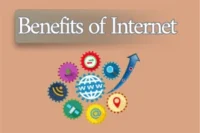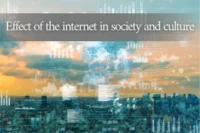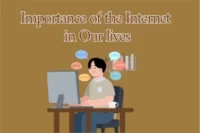Web Development Roadmap: From Beginner to Pro
Published: 19 Jul 2025
In today’s fast-paced digital world, web development has become one of the most valuable and in-demand tech skills. But where should you start, and what should you learn first? That’s where a web development roadmap comes in. A clear, structured learning path helps you progress confidently from learning basic HTML and CSS to advanced topics like DevOps, Web APIs, and full-stack development.
This guide outlines a beginner-to-advanced web development roadmap in 2025, using the most up-to-date tools, trends, and technologies.
Front-End Development Roadmap
Front-end development is the foundation of how users interact with a website, making it the first crucial step in your web development journey.
Basics You Must Learn First
To start your journey, you need to master the core building blocks of the web:
- HTML (HyperText Markup Language): The skeleton of web pages.
- CSS (Cascading Style Sheets): Controls layout, design, and style.
- JavaScript: Brings interactivity and dynamic behavior to websites.
Also learn:
- Responsive design: Make websites look good on all devices.
- Cross-browser compatibility: Ensure your site works in Chrome, Firefox, Safari, etc.
Front-End Tools & Frameworks
Once you’re comfortable with the basics, explore:
- Git & GitHub: Version control tools to manage your code and collaborate.
- CSS Preprocessors: Like SASS or LESS for efficient styling.
- JavaScript frameworks and libraries:
- React (component-based and fast)
- Vue.js (lightweight and beginner-friendly)
- Angular (TypeScript-based, great for enterprise apps)
UI/UX Concepts
Understanding user interface and experience is essential:
- Accessibility (a11y): Make your site usable for everyone.
- Performance optimization: Improve load times and responsiveness.
- Tools like Figma and Adobe XD help prototype user interfaces before coding.
Back-End Development Roadmap
Back-end development is the engine behind any functional website or application, handling data processing, server logic, and database management.
Core Concepts
Back-end development involves handling data, user authentication, and application logic:
- Web servers: Understand how servers deliver content (e.g., Nginx, Apache).
- APIs: Learn to work with RESTful APIs and GraphQL.
- Authentication & Authorization: Secure user login, roles, and data access.
Programming Languages & Frameworks
Choose a language and backend framework:
- Node.js with Express.js (JavaScript-based)
- Python with Django or Flask
- PHP, Ruby on Rails, or Java (Spring Boot)
Databases
You’ll need to work with data storage:
- SQL databases: MySQL, PostgreSQL — structured, relational databases.
- NoSQL databases: MongoDB, Firebase — flexible, JSON-based storage.
DevOps & Deployment
Knowing how to launch and maintain your applications is key.
- Version control: Git and platforms like GitHub or GitLab.
- CI/CD (Continuous Integration/Deployment): Automate builds and deployments.
- Hosting services: Netlify, Vercel, Heroku, AWS.
- Containers & Virtualization: Learn Docker for packaging your app.
Version Control and Collaboration
Version control is a must for any developer:
- Learn Git basics: clone, commit, push, pull
- Use platforms like GitHub, Bitbucket, or GitLab
- Work with teams using Agile methods or Scrum
Optional but Valuable Skills
To stand out in 2025, consider learning:
- TypeScript: A superset of JavaScript that adds type safety.
- Progressive Web Apps (PWAs): Web apps that behave like native apps.
- WebSockets: For real-time features like chat or live notifications.
- GraphQL: A modern alternative to REST APIs.
Roadmaps by Role
Depending on your goal, the roadmap changes slightly:
Front-End Developer Roadmap
- Focus on design, UI/UX, JavaScript frameworks, and accessibility.
Back-End Developer Roadmap
- Master APIs, databases, authentication, and server-side performance.
Full Stack Developer Roadmap
- Combine both front-end and back-end knowledge.
- Use stacks like MERN (MongoDB, Express.js, React, Node.js).
Common Mistakes to Avoid
- Trying to learn everything at once
- Skipping core concepts like HTML, CSS, and Git
- Avoiding hands-on practice — build real projects!
Conclusion
Web development is an ever-evolving field. By following a structured web development roadmap, building projects, and staying updated with the latest tools, you can confidently progress from beginner to professional in 2025.
Frequently Asked Questions (FAQs)
Below are some important FAQs about the Web Development Roadmap to help you better understand the learning path, tools, and technologies involved.
A web development roadmap is a structured guide that outlines the skills, technologies, and tools a developer should learn to become proficient in front-end, back-end, or full-stack web development.
It typically takes 6–12 months of consistent learning and project building to become job-ready, depending on your learning pace and background.
No, many successful web developers are self-taught or have completed online bootcamps and courses. What matters most is hands-on experience and a solid portfolio.
Most beginners start with front-end development (HTML, CSS, JavaScript) as it’s easier to visualize progress. Back-end can be learned after building a strong foundation.
For front-end: JavaScript and TypeScript.
For back-end: Node.js, Python, Java, and PHP remain popular choices.
Yes, most modern web applications are built using frameworks like React, Angular, or Vue. These tools improve efficiency and code management.
The MERN stack includes MongoDB, Express.js, React, and Node.js. It’s popular because it’s JavaScript-based from front to back, making it easier to learn and build full-stack applications.
Common deployment tools include GitHub, Vercel, Netlify, Heroku, and AWS. CI/CD tools like GitHub Actions are also widely used for automation.
Version control is essential. Tools like Git allow you to manage changes, collaborate with teams, and track your project’s progress efficiently.

- Be Respectful
- Stay Relevant
- Stay Positive
- True Feedback
- Encourage Discussion
- Avoid Spamming
- No Fake News
- Don't Copy-Paste
- No Personal Attacks

- Be Respectful
- Stay Relevant
- Stay Positive
- True Feedback
- Encourage Discussion
- Avoid Spamming
- No Fake News
- Don't Copy-Paste
- No Personal Attacks





